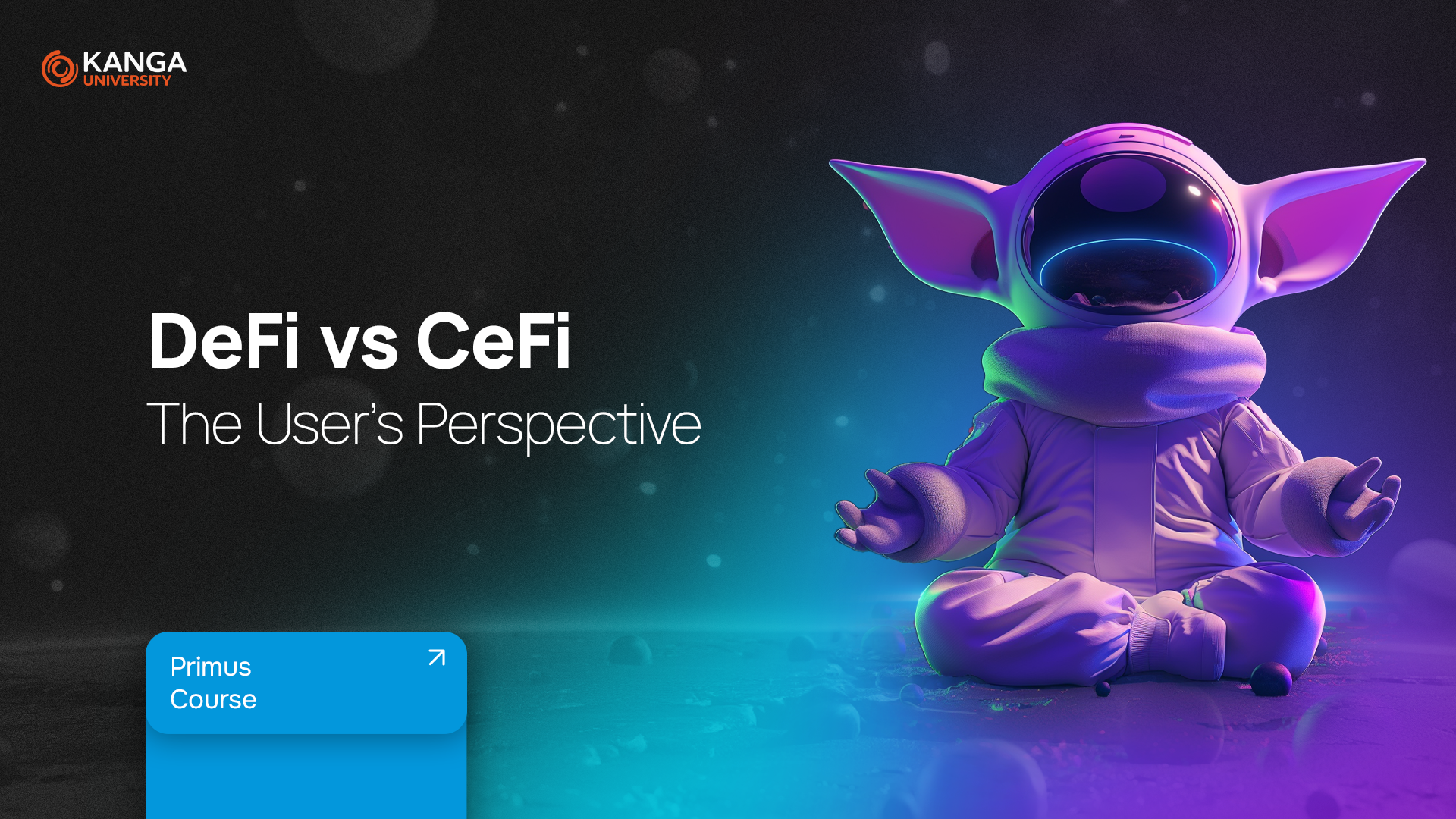
For some, crypto means financial freedom; for others, it’s a lot of new concepts to grasp. Users often face a choice between having full control over their capital or enjoying the convenience of a centralized platform. Both approaches have their advantages and limitations, and the key to safe investing is understanding them.
In this lesson, we’ll explain the fundamental differences between DeFi and CeFi, outline how both models work, and show how you can combine their best features.
What is DeFi?
DeFi, or decentralized finance, is a system of financial services operating on the blockchain without intermediaries. Here, users have full control over their capital, and smart contracts automatically execute investment strategies. Everything is transparent — every transaction is public and verifiable by anyone.
DeFi opens up vast earning opportunities: you can profit from trading fees on protocols, interest from lending, staking rewards, or bonuses for providing liquidity in popular protocols like GMX, Aave, Curve, or Convex.
On the other hand, DeFi carries risks: smart contracts can contain bugs, protocols can be targeted by attacks, and the market can be volatile. Users are fully responsible for the security of their funds and the decisions they make.
What is CeFi?
CeFi, or centralized finance, refers to platforms like exchanges that manage your funds. They offer ease of use, technical support, and often additional protections — sometimes even deposit insurance. You don’t need technical knowledge or to manage your wallet yourself.
The downside is less control over your assets — you trust the platform to manage your capital safely. An example is depositing USDC on an exchange and automatically earning interest, while the platform handles all operations behind the scenes.
Comparing DeFi and CeFi
DeFi offers full control over assets, transparency, and access to innovative strategies, but it requires self-management and technical knowledge.
CeFi offers simplicity, support, and a secure environment, but at the cost of reduced control and often lower earning potential.
The choice depends on the investor’s goals and their comfort level in managing risk.
| Feature | DeFi | CeFi |
| Control | Full control over assets | Platform manages your funds |
| Transparency | Everything public and verifiable | Limited transparency |
| Support | No dedicated support | Professional customer service |
| Simplicity | Requires knowledge and self-reliance | Easy to use |
| Earning potential | Innovative strategies and higher risk | Lower risk, lower returns |
There are also hybrid solutions that combine the advantages of DeFi and CeFi, enabling users to enjoy the security and convenience of centralized platforms while benefiting from the opportunities offered by the decentralized finance space.
Fija – the place where DeFi and CeFi meet
Fija is an example of a hybrid solution that combines the best of both worlds. The user joins an investment strategy through a CeFi platform, and the funds are then automatically allocated into decentralized DeFi mechanisms.
Importantly:
- All operations are audited and fully transparent on the blockchain.
- Revenue streams are diversified — including transaction fees, lending interest, staking rewards, and liquidity bonuses.
- The investment process is simplified — there is no need to set up your own wallet or manage smart contracts manually.
FIJA enables both beginners and advanced users to understand how DeFi works in practice, within a secure and controlled environment.
User Scenarios
If you’re just starting out in crypto
The first steps in the crypto world can be overwhelming — new terms, a constantly moving market, tons of tools to choose from. That’s why CeFi platforms with ready-made, transparent strategies are a great place to start. They work “in the background,” letting you quietly watch how things function, while you get familiar with the basics of DeFi — but in a safe environment.
If you already have experience
You know smart contracts, understand crypto, and want more control over your investments? Treat the platform as a handy launchpad — a place where you quickly join a strategy and then observe and analyze how it performs. It’s a good way to test different approaches, compare outcomes, and hone your skills without giving up the convenience and support of CeFi.
The result? Whether you’re just taking your first steps or you’re a crypto veteran, you’ll find an investment approach suited to your knowledge level and risk appetite — and along the way, gain a solid dose of practical market knowledge.
Summary
DeFi provides full control, transparency, and access to advanced strategies but demands self-management. CeFi is simpler to use, offers support, and has a low entry barrier, but limits control over your capital. FIJA demonstrates how you can combine the best of both worlds — you enter through an exchange, and your funds automatically work in audited, secure DeFi strategies.